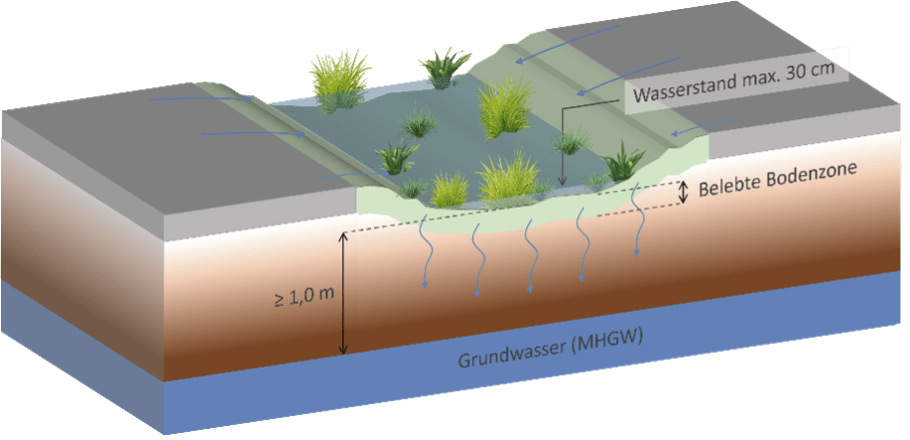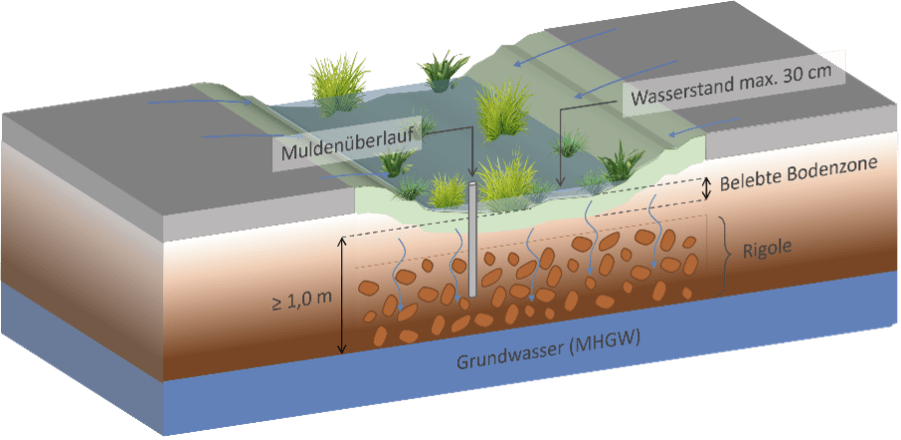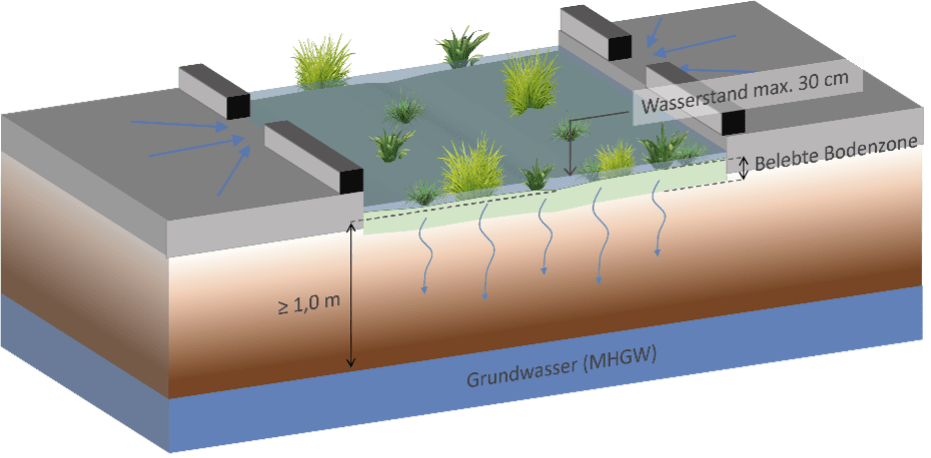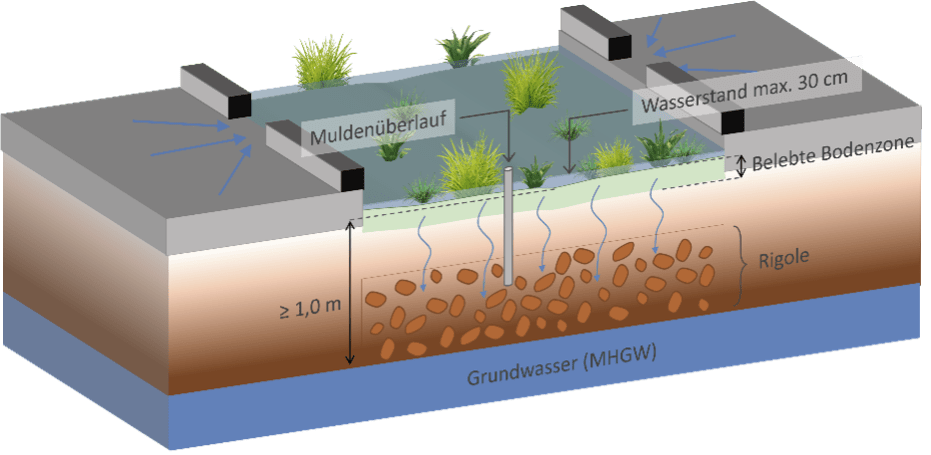Feasibility study on sponge city elements
In recent years, it has become clear that rising temperatures, the increase in extreme weather events and other climatic changes are making it more urgent to adapt inner-city concepts. To counter this, IWR GmbH was commissioned by the city of Böblingen to carry out a feasibility study on the implementation of sponge city elements as part of a street redesign.
The principle of the sponge city is to store or absorb water locally – as in a sponge – and release it again with a time delay. The water can be released both via infiltration and evaporation. The aim is to achieve an approximation to the natural water cycle through decentralized rainwater management in urban areas. Elements of a sponge city offer the opportunity to contribute to adaptation to the consequences of climate change and thus strengthen the resilience of cities.
As part of the feasibility study, IWR GmbH examined both the technical and spatial feasibility of selected infiltration and evaporation elements.
Infiltration elements
The infiltration of rainwater is an elementary component of the natural water balance and thus also of the sponge city principle. This takes place with elements of the sponge city either directly on site, e.g. by water-permeable ground coverings, or increasingly by decentralized infiltration elements to which surface water is directed.
Direct or local infiltration can reduce runoff and thus relieve the sewer system and sewage treatment plant or receiving waters. In addition, the water is promptly returned to the natural water cycle.
-
Infiltration trough:
In infiltration basins, precipitation water that is fed in from existing areas with a high runoff effect is temporarily stored in terrain depressions. From these, it gradually seeps into the subsoil via the living soil zone or evaporates on the surface and via the existing swale vegetation (Figure 1). If the in-situ soil does not have sufficient infiltration capacity or if space is limited, infiltration troughs can also be supplemented with infiltration trenches (Figure 2). The infiltration trench is located below the trough and is usually filled with gravel, plastic fillers or other materials. The infiltration trench is fed by infiltration of the rainwater in the swale, as well as via an overflow from the swale if its storage volume is exhausted.

Figure 1: Swale infiltration

Figure 2: Swale infiltration with infiltration trench
-
Deep bed:
Deep beds have the same function as infiltration troughs, but the required retention height is achieved by a structural border and a slightly lowered surface. By saving the space of a natural slope, as required for the infiltration basin, deep beds can temporarily store more rainwater in a smaller space. Just like infiltration troughs, deep beds can be supplemented with infiltration trenches if there is insufficient space or the soil is not sufficiently permeable.

Figure 3: Deep bed

Figure 4: Deep bed with infiltration trench
The infiltration elements were dimensioned as part of the feasibility study in accordance with DWA-A 138 “Planning, construction and operation of rainwater infiltration systems”. As the area under consideration contains many tree locations, position papers from the German Conference of Heads of Gardening Authorities focusing on the health of urban trees were also used to assess feasibility.
Evaporation elements
Evaporation elements aim to use the natural cooling effect of evaporation to improve the microclimate and thus reduce the increased effect of so-called heat islands in cities. At the same time, elements of evaporation strengthen the natural water balance.
-
Evaporation basin / evaporation bed
Evaporation basins or evaporation beds are externally very similar to infiltration basins and beds. Unlike these, however, no infiltration into deeper soil layers takes place after the passage of the planted soil zone, as evaporation basins or beds are sealed at the bottom. The planted soil zone is thus connected to an underground storage area, which temporarily stores the rainwater and makes it available for planting and evaporation, even in dry phases. Evaporation beds can be natural, with a slope, or structurally enclosed.

Figure 5: Evaporation bed
The use of infiltration and evaporation elements helps to support the natural water cycle and improve the microclimate in cities. These measures offer a promising opportunity to make cities more resilient to the effects of climate change and to sustainably improve the quality of life of residents.
Links on the subject of the sponge city:

